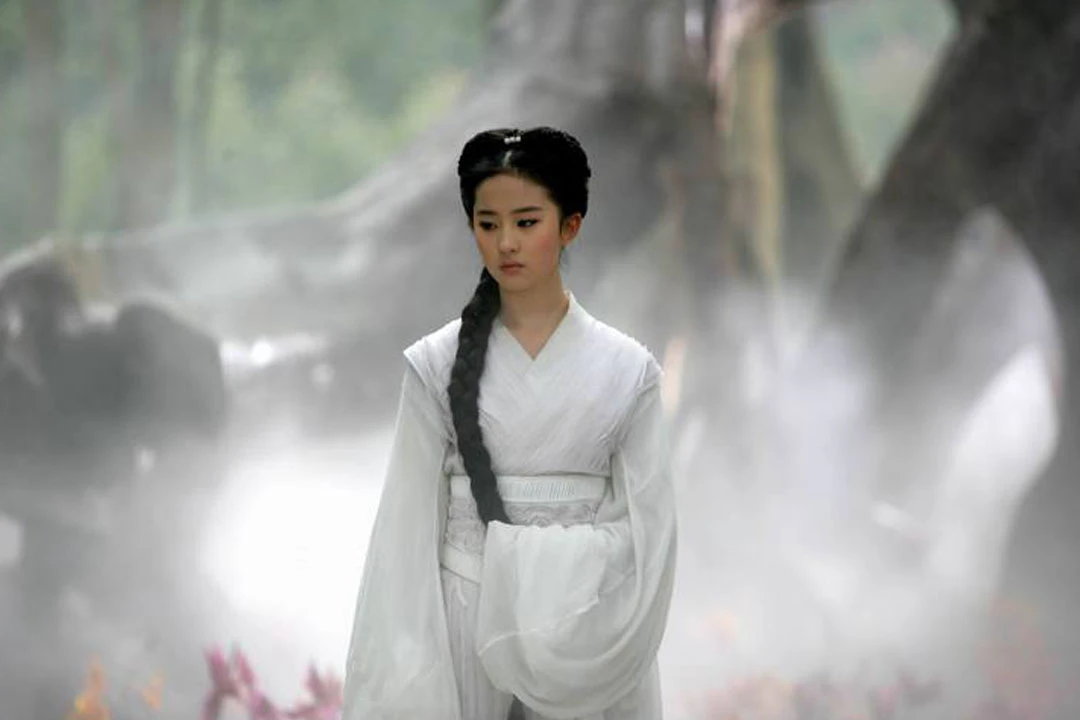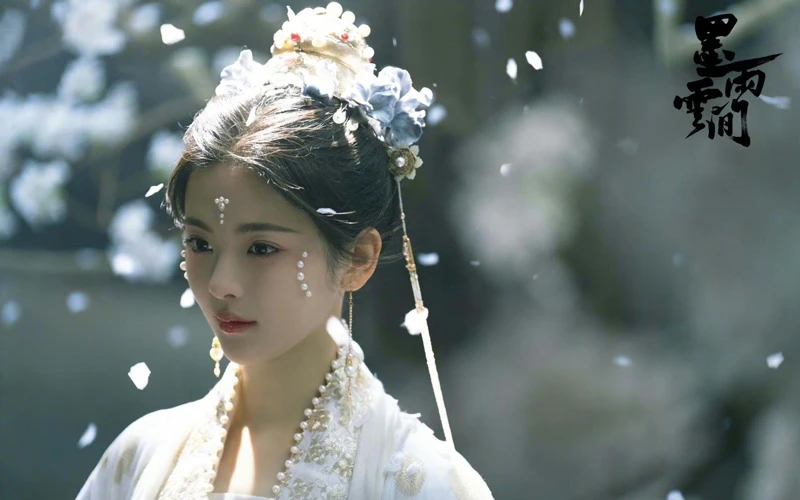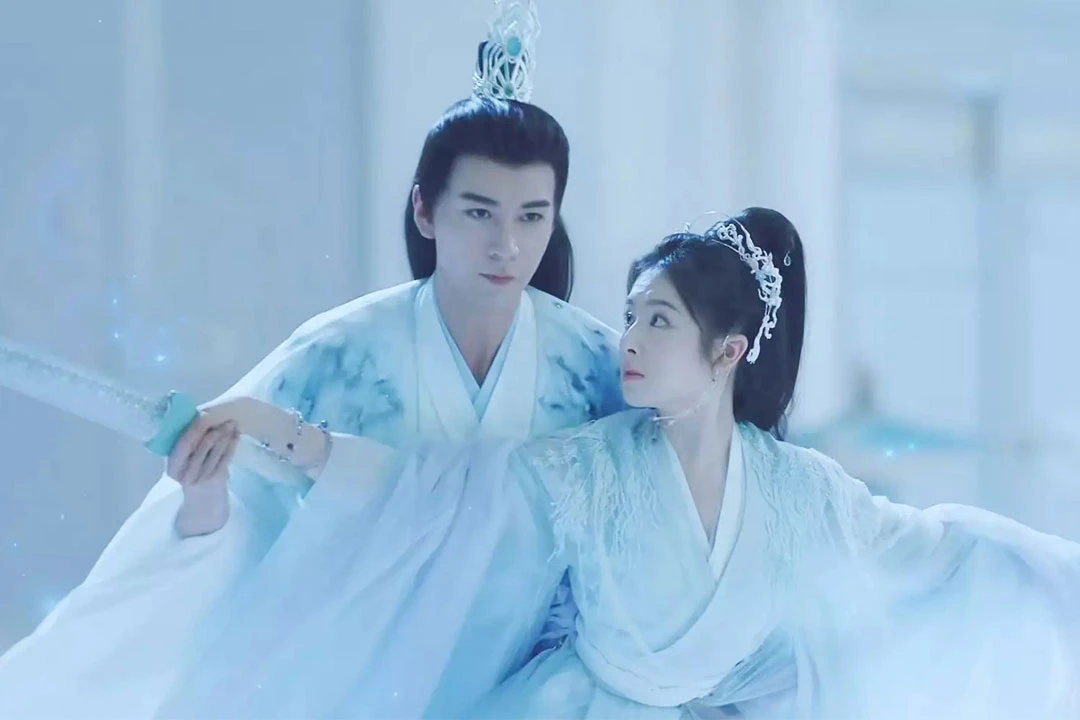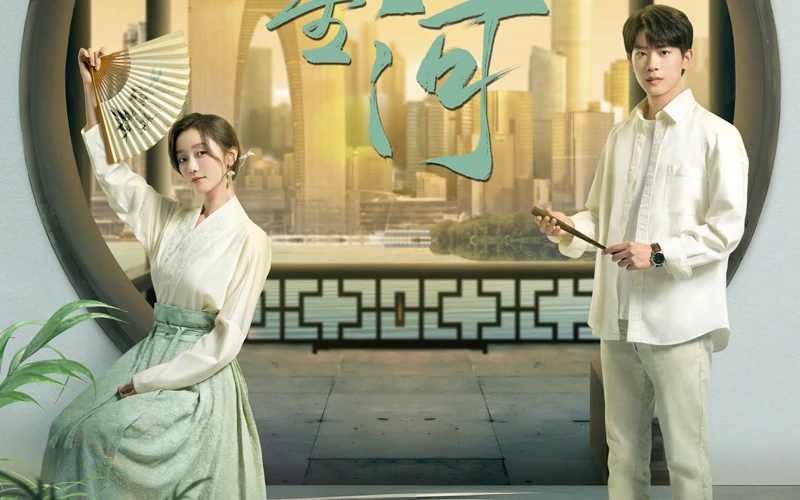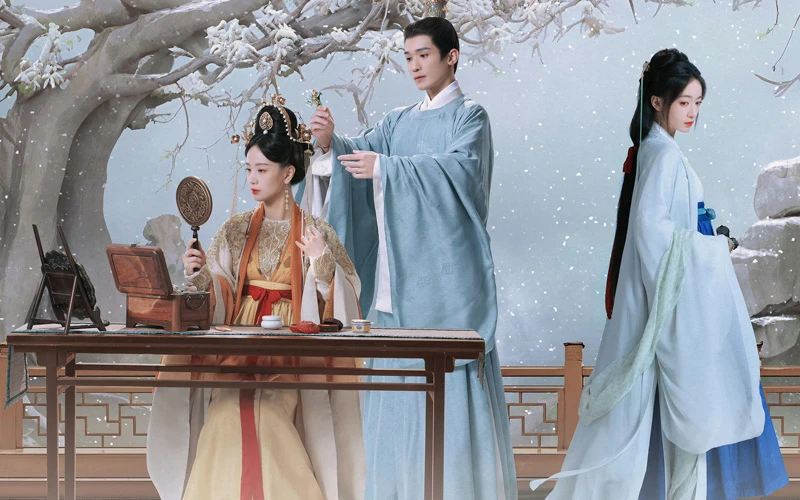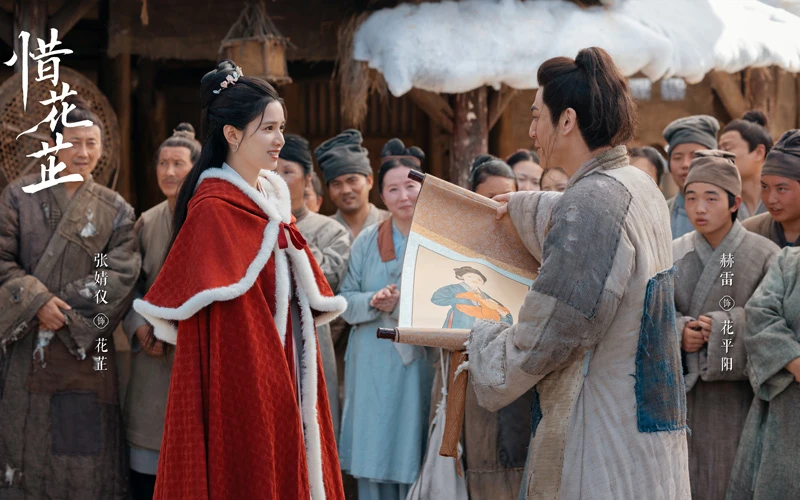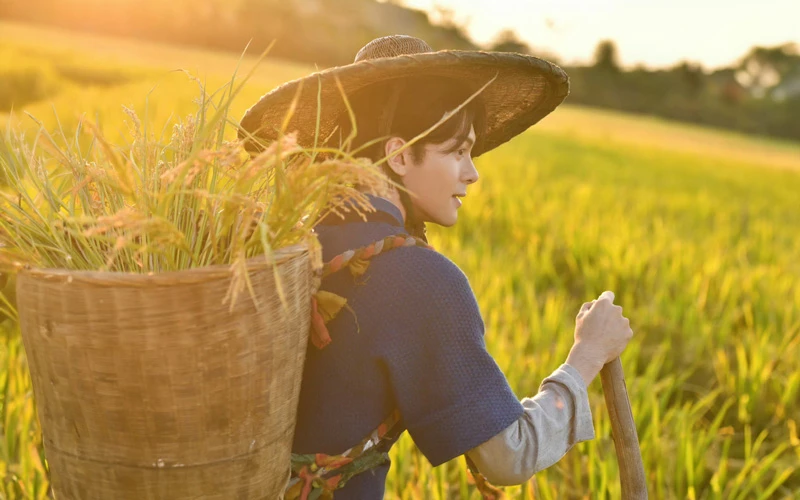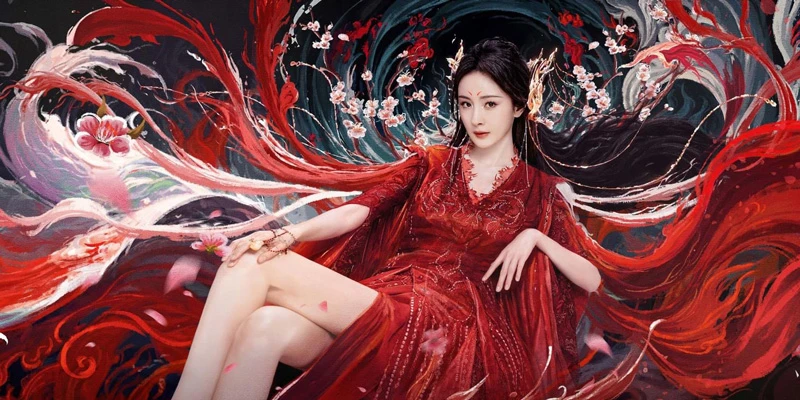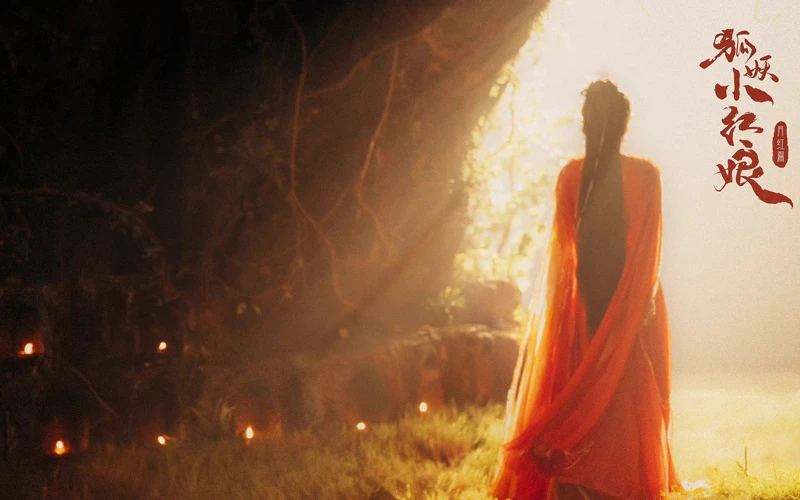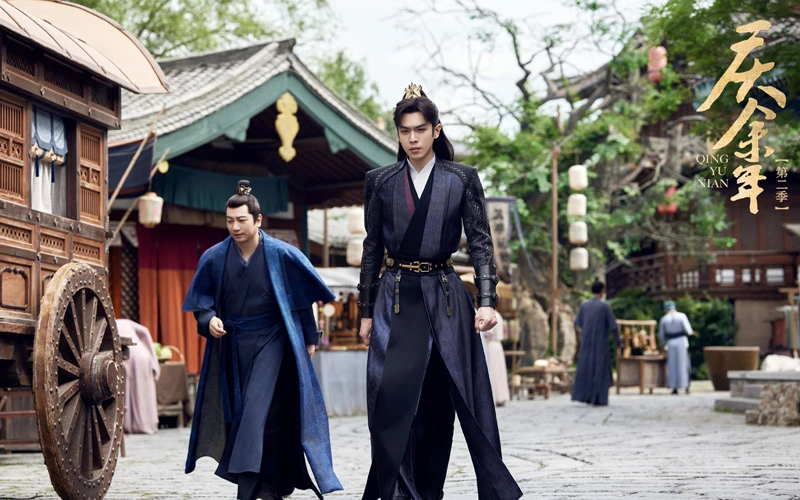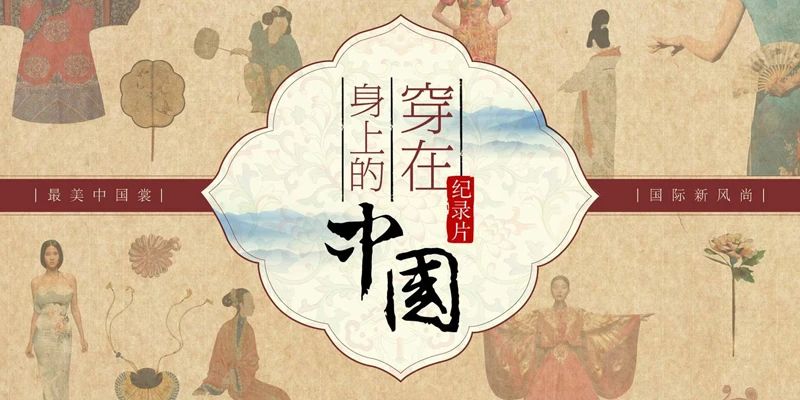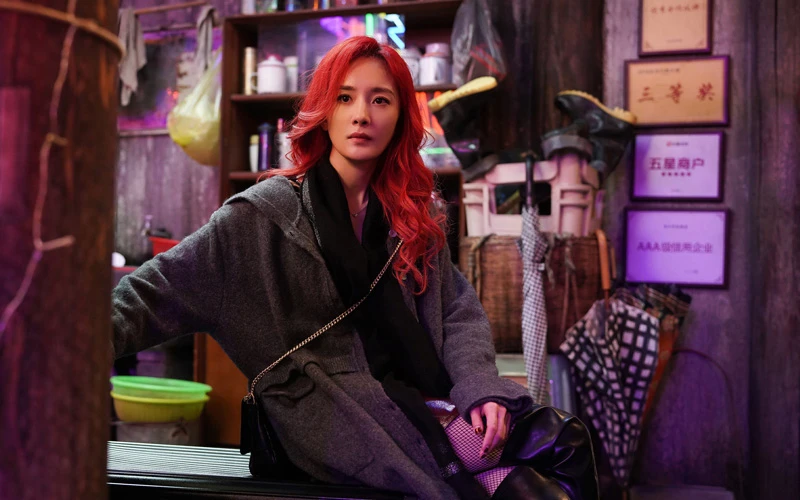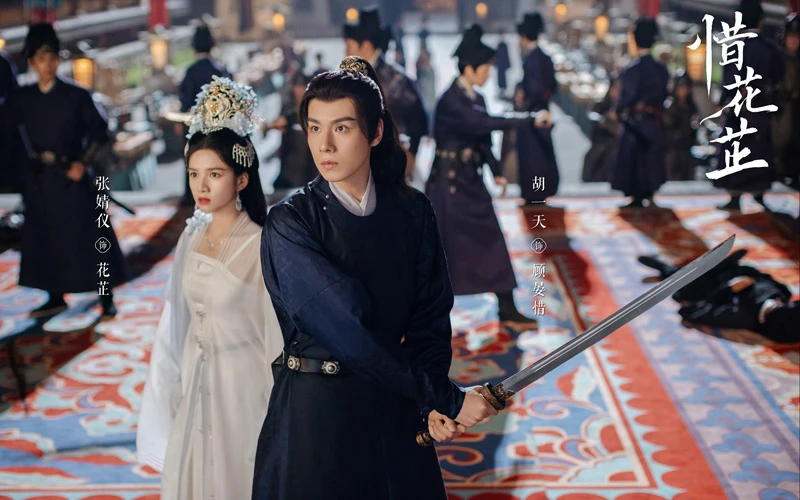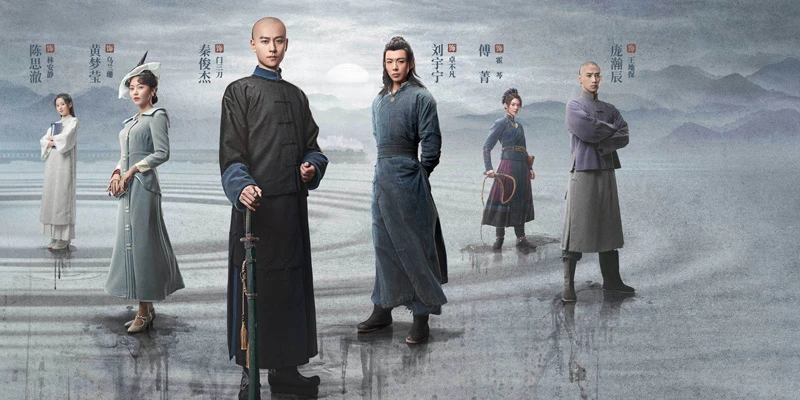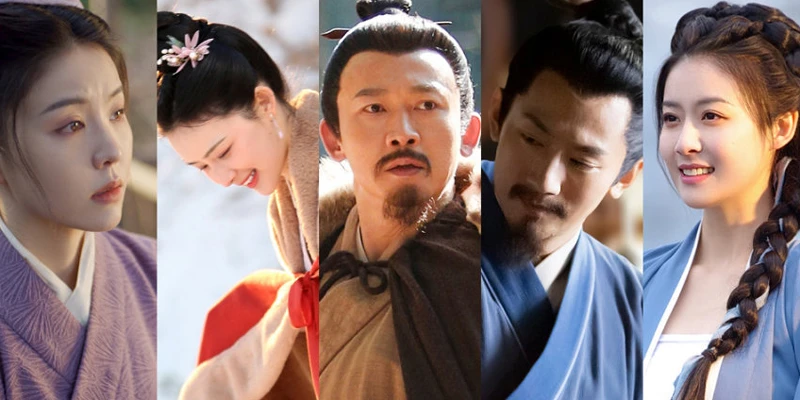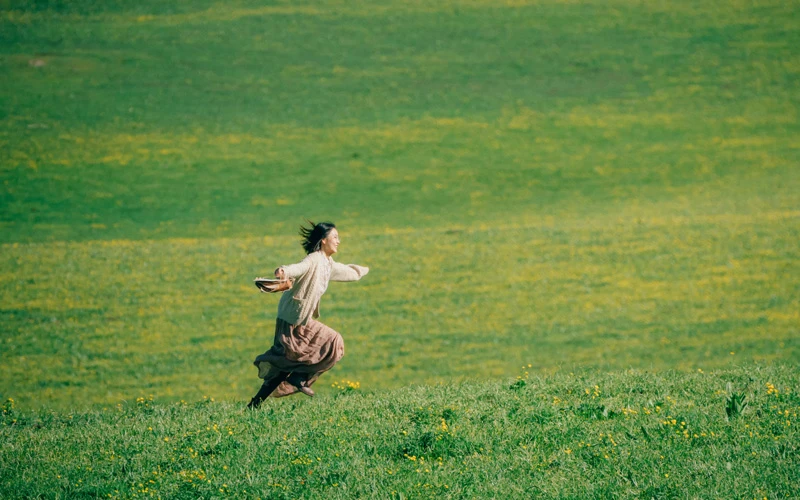Article
搜索结果:
-
The Evolution of Jin Yong's Martial Arts Dramas
In the realm of Chinese television, Jin Yong's wuxia dramas once reigned supreme, capturing the hearts of audiences with their tales of honor, betrayal, and martial arts prowess. However, in recent years, a proliferation of remakes and adaptations has inundated screens, often with controversial alterations that deviate from the cherished originals. This trend has led to a palpable decline in audience expectations for Jin Yong's wuxia dramas. Yet, despite the criticisms and skepticism, the allure of these timeless tales remains undiminished, fueling an ongoing wave of reinterpretations and reimaginings. Enter "The World of Jin Yong," a series that has garnered considerable attention for its bold narrative innovations. While staying true to the classic framework laid down by the original works, this drama embarks on daring creative ventures by delving into the characters' youthful exploits and intertwining romantic plotlines. By doing so, it offers viewers a fresh perspective and a chance to rediscover the iconic heroes of wuxia lore. The success of "The World of Jin Yong" lies not only in its willingness to push the boundaries of storytelling but also in its adept handling of beloved characters and their relationships. By exploring the formative years of these figures and delving… -
The Cultural Significance of Xianxia Literature
Rooted deeply in Chinese traditional culture, Xianxia literature not only unveils fantastical realms and enthralling tales of martial heroes and immortal beings but also encapsulates a unique understanding of morality, emotions, and life's essence. In an era of globalization, Xianxia literature emerges as a vital emissary of Chinese culture to the world stage. Xianxia, a genre often characterized by its fusion of mythology, martial arts, and elements of Taoist philosophy, has a rich history dating back centuries. Its origins can be traced to ancient Chinese legends and folklore, where mystical beings and celestial realms coexist alongside mortal realms. These tales, passed down through generations, served not only as entertainment but also as moral instruction, imparting wisdom and guiding principles to listeners. Central to Xianxia literature is the concept of cultivation, wherein protagonists embark on a spiritual journey to attain enlightenment, immortality, or mastery of martial arts. Through rigorous training, inner cultivation, and encounters with formidable adversaries, they transcend the limitations of mortality and ascend to higher realms of existence. This theme resonates deeply with Chinese audiences, reflecting cultural values of perseverance, self-improvement, and the pursuit of spiritual enlightenment. Furthermore, Xianxia literature embodies a profound reverence for nature and the cosmos,… -
The Rising Popularity of Pearl Makeup in Historical Drama The Double
Recently, the female characters in the historical drama "The Double" have sparked much discussion with their pearl makeup. Not only do their hair accessories feature pearls, but their faces are adorned with numerous pearls, too, placed on their foreheads, cheeks, and corners of their mouths. Attentive viewers have counted up to 25 pearls on one face, with the least adorned having 8 pearls. This leads to the question: why do they put pearls on their faces? The Trend of Pearl Makeup The practice of applying pearls on the face dates back to the Song Dynasty and was quite popular at that time. Ancient women used rouge and other pigments to decorate their faces or created various patterns with materials like gold, jade, pearls, and colored paper, which they adhered to their cheeks. This practice was known as "Mian Ye (面靥)," with pearl makeup specifically called "Zhenzhu Mianye." Pearl makeup was actually a form of the ornate makeup from the Tang Dynasty, which became fashionable in the Song Dynasty. This trend persisted partly because the Song Dynasty carried on the traditions of the Tang and Five Dynasties periods, where facial decorations were highly regarded. Additionally, influenced by Zhu Xi's Neo-Confucianism, which… -
Exploring the Dearth of Xianxia Films on the Big Screen
Xianxia-themed web series and online literature have enjoyed tremendous popularity, yet the big screen seems to lack Xianxia-themed films. Why is that? Firstly, in terms of creative adaptation, the vast and intricate world of Xianxia presents significant challenges for filmmakers. This complexity often restricts the adaptation of Xianxia IPs to television series rather than feature films. Xianxia dramas typically span over 30 episodes, allowing ample time to depict the fantastical realms of Xianxia in detail. However, condensing the intricate world-building and character relationships of Xianxia into a 120-minute film presents a formidable challenge. Without sufficient exposition, audiences may struggle to grasp the backstory and nuances of the Xianxia world, leading to confusion and disengagement. Furthermore, the commercial viability of Xianxia films is another consideration. While Xianxia-themed web series and online literature have found success with niche audiences, the broader appeal of Xianxia films on the big screen remains uncertain. Unlike television dramas, which can cater to specific fanbases over multiple episodes, films require a broader appeal to attract a larger audience and recoup production costs. Given the niche nature of Xianxia content and its relatively limited mainstream appeal, studios may be hesitant to invest in Xianxia films for fear of… -
Drama to Destination: How The Story of Suzhou Boosted TV and Tourism
The initial attraction to "The Story of Suzhou" was its poetic poster. The ancient city’s flowing water, misty bridges, and a beautiful woman standing on a stone slab, separated from the bustling city, captivated many. The poster featured a couplet: "In spring, Suzhou's greenery spans the river, stone bridges and red towers remain unchanged." As the premiere approached, this poetic atmosphere only intensified. The official social media account wrote: "Unveiling the splendor of Suzhou's intangible cultural heritage, weaving a new chapter of millennia-old cultural lineage." Lead actress Xiao Yan said, "Within the opening and closing of scenes, one sees the beauty of intangible heritage, and encounters the vibrant life of Jiangnan in the streets and alleys." In today's extensive audio-visual entertainment landscape, how should cultural and tourism micro-dramas position themselves? What role should these short dramas play in promoting local culture and tourism? "The Story of Suzhou" provides the answer: a key, that fully unlocks the audience's curiosity and desire to explore. Literature once played this role. Wang Anyi casually wrote in her book, "The moonlight in Suzhou seems especially cool and smooth, people feel refreshingly clear, even sleep is clear and bright," sparking readers' longing. "The Story of Suzhou"… -
Sea of Dreams Analysis: How It's Redefining Chinese Sci-Fi Dreams
Youku unveiled its 2024 "Spring Gathering" lineup, announcing 77 major dramas spanning five categories: historical, suspense, urban, legend, and Hong Kong dramas. However, one series stands out prominently, distinct from the five main categories, it is "Sea of Dreams," adapted from Liu Cixin's eponymous short science fiction story. The mention of "science fiction" stirs mixed feelings. Chinese sci-fi dramas have had a tumultuous track record, with audience expectations rising and falling over the years. There has always been hope that the rise of the Chinese film and TV industry would bring higher-quality local sci-fi productions. However, science fiction remains a "high-hanging fruit" in Chinese dramas, seldom attempted. Few dare to take on the challenge, and even fewer succeed. Thus, upon learning that "Sea of Dreams" is a sci-fi series, one can't help but feel a mix of curiosity and concern. Will this show manage to uphold the promise of Chinese sci-fi, a promise rekindled by "The Wandering Earth," or will it fall short and close the door on this genre once again? "Sea of Dreams" boasts significant pedigree. It is based on Liu Cixin's short story, published in 2002 in the "Science Fiction World" magazine, and tells a wildly imaginative… -
The Double: Integration of Intangible Cultural Heritage and Emotional Value
Content creators who consistently engage with the public's aesthetic preferences are quicker and more acutely aware of changes in audience demands, down to the finest details. Looking back at the content market of the past two years, blockbusters often resonate with real-life experiences or are born in the spiritual homeland of traditional culture. "The Double," an ancient costume drama about women's growth and inspiration, achieved over 10,000 views within three days of its premiere on Youku. It became the fastest drama to reach this milestone in 2024, with the highest first-day viewership and popularity on its launch day. The series has already secured its status as a national hit, driven by word-of-mouth among viewers. Starring Wu Jinyan, Wang Xingyue, and Chen Xinhai, "The Double (Mo Yu Yun Jian, 墨雨云间)" is a historical romance drama that tells the story of Xue Fangfei (played by Wu Jinyan), the daughter of a county magistrate who loses everything after a major upheaval. Under the request of her savior, Jiang Li (played by Yang Chaoyue), the daughter of the Zhongshu Ling, she returns to the capital under Jiang Li's identity. With the help of Duke Xiao Heng (played by Wang Xingyue) and others, she overcomes… -
Chinese Culture: The Untold Stories of Female Merchants in Ancient China
In recent years, the trend of female-centric dramas, including ensemble cast dramas and strong female lead dramas, has become prominent. This trend has extended into historical dramas, leading to new narratives where female protagonists build their fortunes and conquer the business world through their own efforts. For instance, "Blossoms in Adversity," which concluded in early May, tells the story of the noblewoman Huazhi who, along with her family, overcomes adversity by starting a business. This wave of female protagonists navigating the business world in historical dramas shows no signs of slowing down. Numerous dramas wrapped filming from last year to this year, featuring female leads as businesswomen. According to official synopses, the female lead in "Liu Zhou Story," Liu Miantang, opens a porcelain shop; the protagonist in "Brocade Odyssey," Ji Yingying, is involved in the Shu brocade business; and the lead in "The Story of Pearl Girl," Duanwu, deals in jewelry. Moreover, the ongoing production "Flourished Peony" will narrate the story of He Weifang, who starts a flower business. Adding to this, "A Dream of Splendor," which aired last year, centers on the tea house owner Zhao Pan'er, who expands her small tea house into the largest restaurant in Dongjing.… -
Inside Fox Spirit Matchmaker: Moon Red Chapter - The Impact of Yang Mi and Gong Jun's Performances
The market for historical costume dramas, primarily targeting young audiences, has always welcomed the arrival of dramas with higher attractiveness, fresher faces, and more sophisticated costume and set designs. Even before the arrival of summer, various types of historical costume dramas based on IP have flooded the market. Leading the charge is "Fox Spirit Matchmaker: Red-Moon Pact," the first live-action adaptation of the popular anime "Fox Spirit Matchmaker," produced by iQIYI. Starring Yang Mi and Gong Jun, it is an eastern fantasy drama. The strong appeal of A-list actors, magnificent scenery, and exquisite costume design have become the magic weapons for attracting attention and winning over fans. With top-notch production values, the series delivers a visual feast, presenting a dazzling array of beauties and scenery imbued with Eastern charm, immersing viewers in its splendor. Many have predicted that "Fox Spirit Matchmaker: Red-Moon Pact" will surely secure a place on the hot drama charts at the end of May. As expected, the drama's premiere attracted attention, with its popularity on streaming platforms surpassing 8888 within 19 hours. It quickly climbed to the top spot on popular drama charts on platforms from the second day of its TV broadcast. Various trending topics… -
Seeking Tradition: How Ancient Chinese Shielded Themselves from the Sun
In the scorching heat of summer, ancient Chinese people didn't have sunscreen, but they took sun protection seriously. Though the concept of physical sunscreen is a recent development, the approach to sun protection was quite similar: "shade" was key. Follow BAZAAR CHINOISERIE to learn how ancient people protected themselves from the sun. To shield themselves from the sun while staying mobile, a sun hat is the perfect summer accessory. Surprisingly, "sun hats" aren't a modern invention; they're mentioned directly in ancient texts. For instance, during the Ming Dynasty, the "Xu Tong Dian" listed various hats, mentioning: "Sun hats were permitted for scholars entering the imperial examinations during the early Ming Dynasty. (遮阳帽,明初士人贡举入监者许戴之。)" Similarly, the "Jian Hu Ji" describes the "sun hat" as follows: "According to Ming regulations, scholars could wear large sun hats after completing their studies at the imperial college, similar to the ancient bamboo hats or the Tang dynasty silk hats. (明制。士子入胄监满日。许戴遮阳大帽。即古笠。又唐时所谓席帽也。)" In addition, there were also Weimao (帷帽) popular during the Tang and Song dynasties. These hats had thin gauze attached under wide brims, offering advanced sun protection while also shielding against some wind and dust. Curtain hats, also known as Zhaojun hats, are said to be… -
What Makes Fox Spirit Matchmaker: Red-Moon Pact a Must-Watch
The long-awaited "Fox Spirit Matchmaker: Red-Moon Pact" has finally premiered. Before its release, the number of reservations on the platform has surpassed 7.94 million, breaking the historical record for reservations on iQIYI, igniting tremendous excitement. Adapted from the manga "Fox Spirit Matchmaker" by Xiao Xin Tuo. In a world of constant conflict between humans and spirits, the righteous head of the Tu Mountain Fox Clan, Tu Shan Hong Hong (played by Yang Mi), hopes for peace between both sides. To achieve this, she joins forces with Dongfang Yue Chu (played by Gong Jun), an orphan from the Dongfang family, to embark on a mission to foster love between humans and spirits. Their goal is to resist the dark forces threatening the Tu Mountain and to dissolve the sinister powers fueling the discord between humans and spirits. The stellar cast includes Yang Mi and Gong Jun as the lead actors, with special appearances by Guo Xiaoting, Wei Zheming, Hu Lianxin, and Wen Zhengrong. The three romantic storylines feature the heartfelt performances of Zhu Xudan and Yang Shize, Chen Yao and Mao Zijun, and Chen Duling and Zhang Linghe. With their outstanding looks, acting skills, and popularity, this lineup has stirred up… -
Screening Insights of Fox Spirit Matchmaker: Moon Red Chapter
On the afternoon of May 22nd, "Fox Spirit Matchmaker: Red-Moon Pact" held an advance screening in Beijing. Five specially invited experts, along with media representatives and 300 audience members, gathered to watch the exciting first two episodes of "Fox Spirit Matchmaker: Red-Moon Pact" on the big screen. They engaged in in-depth discussions with the executive producer of "Fox Spirit Matchmaker: Red-Moon Pact" and senior vice president of iQIYI, Dai Ying, as well as directors Mai Guanzhi and Du Lin. The five experts were Wang Yichuan, Vice Chairman of the China Literary Critics Association; Kang Wei, Editor-in-Chief of China Art News; screenwriter Song Fangjin; renowned director Lin Nan, known for his expertise in fantasy genres; and Li Yinghui, an expert in filigree inlay and lecturer at Zhejiang International Studies University. Li Yinghui was also involved in the prop production for the series and shared the rich history of filigree inlay craftsmanship with the audience, highlighting its clever application in the show. The experts provided immediate feedback and shared their impressions and evaluations of "Fox Spirit Matchmaker: Red-Moon Pact." Wang Yichuan: Embodies the chivalrous spirit of traditional Chinese culture I've had limited exposure to fantasy dramas in the past, so I… -
Return to Jianghu: Joy of Life 2 Premiere Ignites Excitement Among Audiences
After countless calls and anticipation, Fan Xian has returned. On the evening of May 16th, after a 5-year hiatus, "Joy of Life 2" premiered online, skyrocketing in viewership and popularity. With a peak viewership rating surpassing 2.2 and a market share of 10%, it secured the top spot in viewership during the same time slot. On Tencent Video, its internal heat index reached 32,906, making it the first series in history to enter Tencent Video's hit club on its premiere day. On the second day of its release, the heat index surged to 33,636, breaking the platform's historical record held by "A Dream of Splendor" for two years (33,520). The actual views exceeded 29 million, setting a new high for the first-day views of new dramas in 2024. Topics related to "Joy of Life 2" dominated various social media platforms, with 16 trending searches within two hours of its premiere, almost monopolizing the charts. These impressive figures have solidified "Joy of Life 2" as the "King of Dramas". From a male-oriented work adaptation into a commercialized benchmark five years ago, to leading the entire online drama landscape with a bang upon its return, "Joy of Life" not only ignited another… -
Wearing China on the Body: Unraveling the Tapestry of Chinese Attire
Clothing, food, shelter and transportation, the word clothing is the first. Throughout history, the Chinese have consistently showcased their pursuit of clothing. From the exquisite attire donned by emperors in ancient palaces to the fashionable ensembles spotted in bustling city streets, people appear to consistently have a wealth of commentary regarding fashion trends. Today, a documentary that was specifically created to delve into the rich Chinese clothing culture would be recommended - "Wearing China on the Body". It tells the story of Chinese etiquette, clothing expression, folk art inheritance, and human relationships through vivid clothing, and skillfully reflects the changes in people's aesthetic preferences in the era. The Chinese documentary "Wearing China on the Body" is composed of six episodes, including Sang Ma, Bu Yi, Ni Shang, Jin Xiu, Zi Jin, and Jiang Xin. This documentary interprets Chinese culture through the perspective of clothing, arousing the audience's profound longing for clothing aesthetics from various perspectives such as fashion, elegance, intricacy, culture, humanity, and emotion. Enable them to comprehend the China within which we reside from the dreamlike clothing realm. Episode 1: Sang Ma This episode will trace the origin of magnificent Chinese costumes, choose the life course of different… -
How Chinese Post-85 Actresses Changing the Cdrama Industry
This year, the film industry has witnessed a perplexing move with the movie "Nothing Can't Be Undone by a Hotpot" being pulled from theaters and switched to streaming online. Just five days after its release, the film was withdrawn from cinemas, citing "various environmental factors" leading to low scheduling rates, with plans to re-release it at a later date. However, just six days after its withdrawal, this movie, originally intended for theatrical release, suddenly appeared online where it became accessible to subscribers without even a separate fee, leaving those who had paid for tickets feeling betrayed. This shift has significantly impacted Yang Mi, the lead actress, beyond just the director. This year has been pivotal for her, with not only "Nothing Can't Be Undone by a Hotpot" but also the spy drama "In the Name of the Brother," marking a substantial shift in her career towards both film and television. These roles signal a clear intention to transform, aligning with the broader trend among her peers from the post-85 actors, striving to redefine their artistic directions. Post-85 Full-scale Transformation in Film and Drama With "In the Name of the Brother" setting the stage and "Nothing Can't Be Undone by… -
A Deep Dive into Blossoms in Adversity - New Theme Costume Drama
Before "In Blossom" and after "Blossoms in Adversity," Youku released these two ancient-style dramas that achieved commendable success. However, before its premiere, "Blossoms in Adversity" was not favored by the market or the audience, lacking strong concepts and popular actors, and was considered just another assembly-line historical drama. Surprisingly, as the plot unfolded, "Blossoms in Adversity" managed to turn the tide against the odds. From initial widespread ridicule at its launch to its successful finale, "Blossoms in Adversity" can truly be considered an unexpected delight in this year’s market for ancient-style dramas. Recently, Pengxiaoxian spoke with Zhu Ruibin, the director of "Blossoms in Adversity," who shared the secret formula behind the drama's successful turnaround and his evolving creative philosophy over more than thirty years in the industry. Targeting Cdrama Market Demands Produced by Youku and directed by Zhu Ruibin, with scriptwriting by He Fang, and starring Hu Yitian and Zhang Jingyi, with a special guest appearance by Myolie Wu, "Blossoms in Adversity" is a historical romance drama adapted from the novel of the same name by Kong Liu. The series narrates the story of Gu Yanxi (played by Hu Yitian), and the fallen noblewoman Hua Zhi (played by Zhang… -
Cultural Reflections in Heroes: A Modern Take on Historical Narratives
The audience for male-oriented dramas tends to believe in seeing is believing. They won't easily recommend a show or become fans of it just because it's based on a popular work or stars a well-known actor unless they've seen it with their own eyes. Recently, a lot of people have been enthusiastically recommending "Heroes" on social media, which premiered on Tencent Video and iQIYI on May 8th. The series, created by Bai Yicong with directors Lou Jian (known for "The Imperial Coroner" with a rating of 8.0 on Douban) and Wei Lizhou (director of "Ultimate Notes" with a rating of 8.2 on Douban), focuses on a martial arts theme set in a tumultuous era. It features mysterious cases, legendary heroes, treasure hunting in chaotic times, and a strong sense of patriotism. Although it hasn't been rated on Douban yet, the word-of-mouth has been rapidly and positively spreading. Just four episodes in, Tencent Video's binge-watching audience rated it an impressive 9.2. Discussions about the details of the drama are always heated, whether on social media platforms or in the comment sections of the two major streaming services. For instance, the real identity of Lin Anjing (played by Chen Siche) was guessed… -
Discovering Su Dongpo in Ding Feng Bo - Classic Chinese Documentary
In 2023, China Central Television released a remarkable documentary about Su Shi titled "Ding Feng Bo (定风波)". Covering themes like poetry, art, cuisine, travel, and society, the series revisits the tumultuous life of Su Shi, also known as Su Dongpo, highlighting how his attitude toward life continues to inspire us today. Su Shi is portrayed by Nie Yuan, who, at 45, skillfully captures Su Shi's life from his 20s to his old age. Whether it's his youthful ambition as he begins his official career, his diligence in serving the people, his despair during the "Crow Terrace Poetry Case," or his optimism after being exiled, Nie brings each phase of Su Shi's life to vivid life, making this arguably the best on-screen portrayal of Su Shi to date. The five episodes of "Ding Feng Bo" are titled "Chu Chuan Ji," "Hu Shan Ji," "Mo Jie Ji," "Xuan Hu Ji," and "Jie Lu Ji." The cinematography greatly enhances the aesthetic quality of the series, perfectly aligning with the artistic ambiance of Su Shi's poetry. Every frame is stunning enough to be a wallpaper. Su Shi is often remembered as a literary giant who loved life, but in truth, he faced much hardship,… -
Adapting Prose to Drama: The Artistry Behind To the Wonder
Against all expectations, "To the Wonder" opened with a rating of 8.5 on Douban, making it this year's top-rated Chinese drama on the platform. This long-anticipated work has been stirring up speculation ever since its announcement under the "Microdust Theater" banner. On one hand, the challenge lies in adapting essays into a drama format; on the other, the intense competition among theatrical productions on streaming platforms makes the debut of a new label quite suspenseful. After the premiere of "To the Wonder," discussion about the series has been vibrant across major social platforms, with topics focusing on the natural scenery, mother-daughter relationships, and clashing viewpoints. The series tells the story of Han Chinese girl Li Wenxiu (played by Zhou Yiran), who grew up in the countryside of Altay. Dropping out of high school, she moves to a big city to make a living and pursue her literary dreams. After facing setbacks, she returns home to run a small shop with her mother (played by Ma Yili). There, she meets a Kazakh youth, Batai (played by Yu Shi), and gradually discovers the beauty and meaning of life. At this year's Beijing Film Festival, "To the Wonder" held an advanced screening event.… -
Discover China's 10 Most Iconic Bronze Ding: Symbols of Power and Ceremony
Two weeks ago, at a significant meeting on the "Archaeology of China" project, held in Huainan, Anhui Province, a major discovery was announced. Archaeologists revealed that a bronze Ding unearthed from the "Wu Wangdun" site, the largest and most intricate high-status Chu tomb excavated to date, set a new record for the largest Chu cultural Ding found in China. Measuring 88.3 cm in diameter and about 1.2 m in height, this vessel surpasses the renowned Zhuke Dading (or "Chu Dading"), a prized artifact of the Anhui Museum. Although it doesn't rival the monumental Houmuwu Ding, its discovery has still sparked great excitement. As China national treasure, each bronze vessel is not only a marvel to craft but also a supreme symbol of power. Historically, the Ding size indicated one's status and authority. Records show that ancient nobles cooked various meats separately in different vessel, directly serving from them. Later, the Zhou Li stipulated a hierarchy of Dings: nine for the emperor, seven for lords, five for ministers, and three for officials. Thus, their size and weight took on special meaning, remaining a point of fascination even today. We know the largest and heaviest Ding in China is the Houmuwu Ding,…
